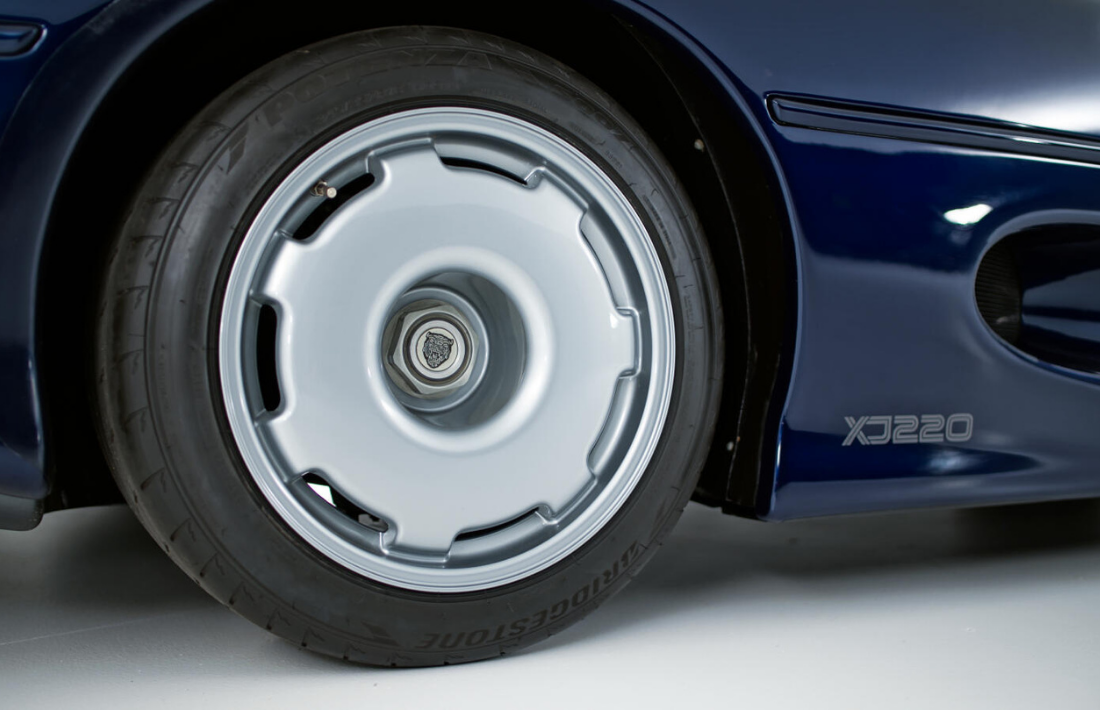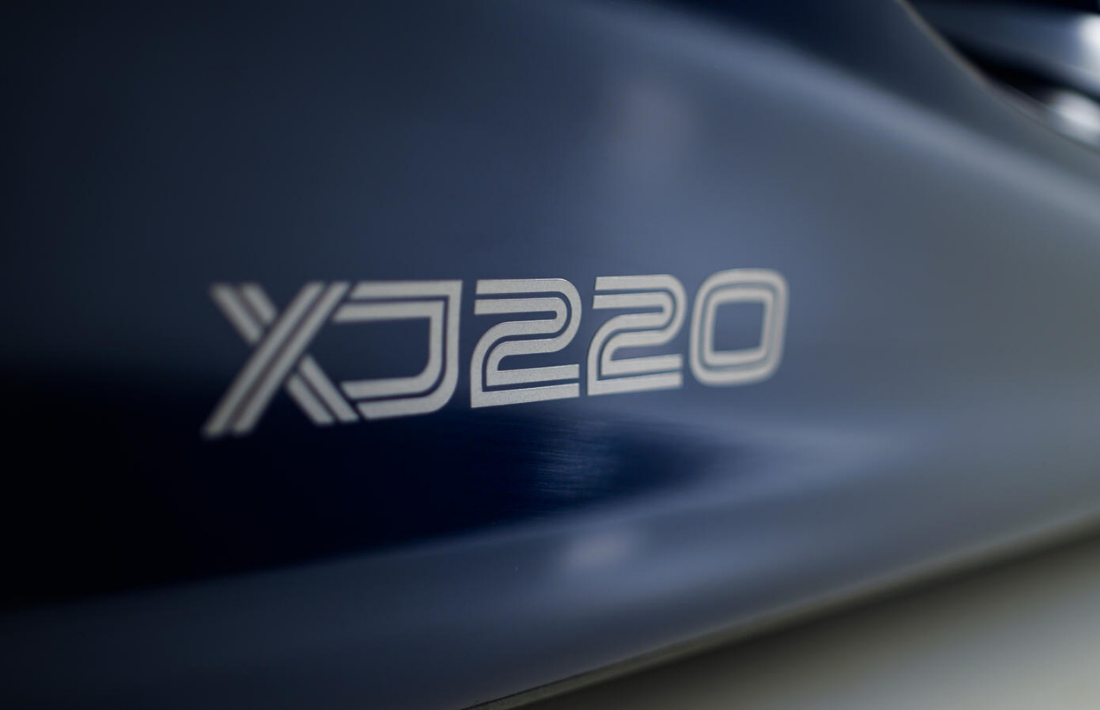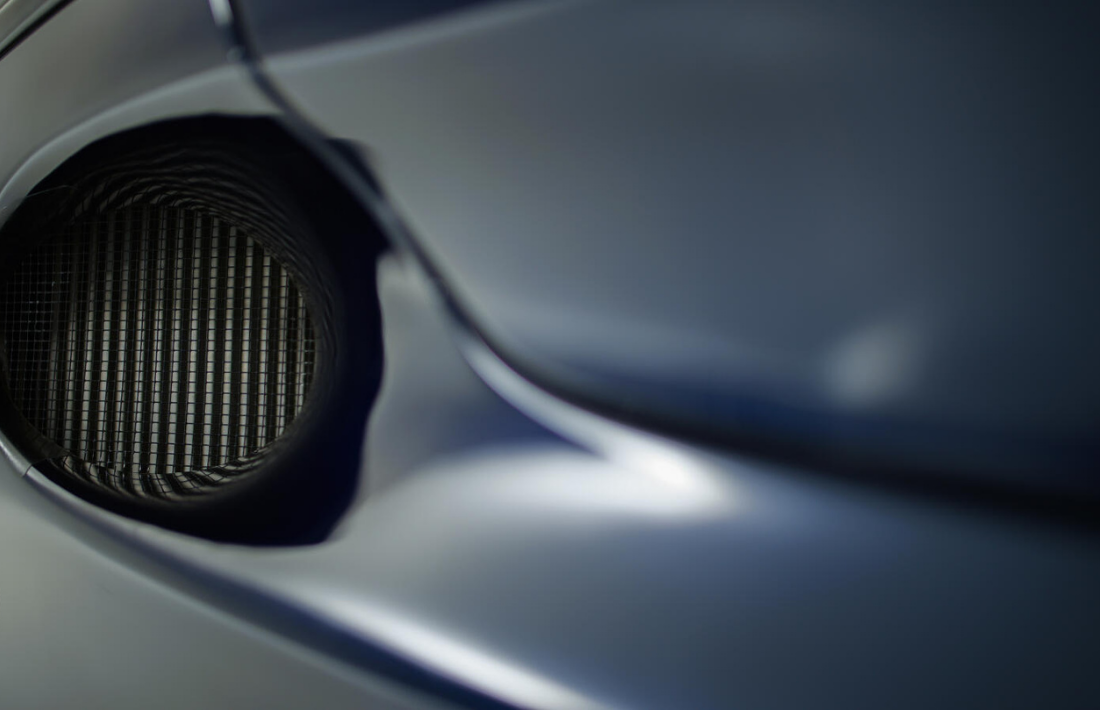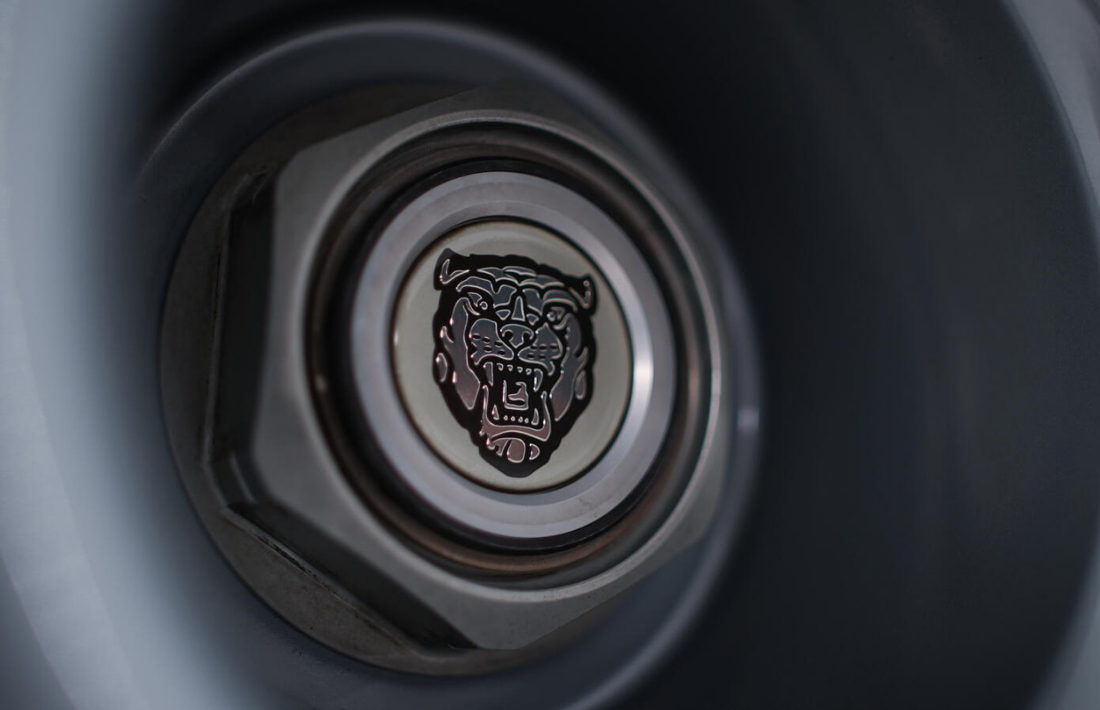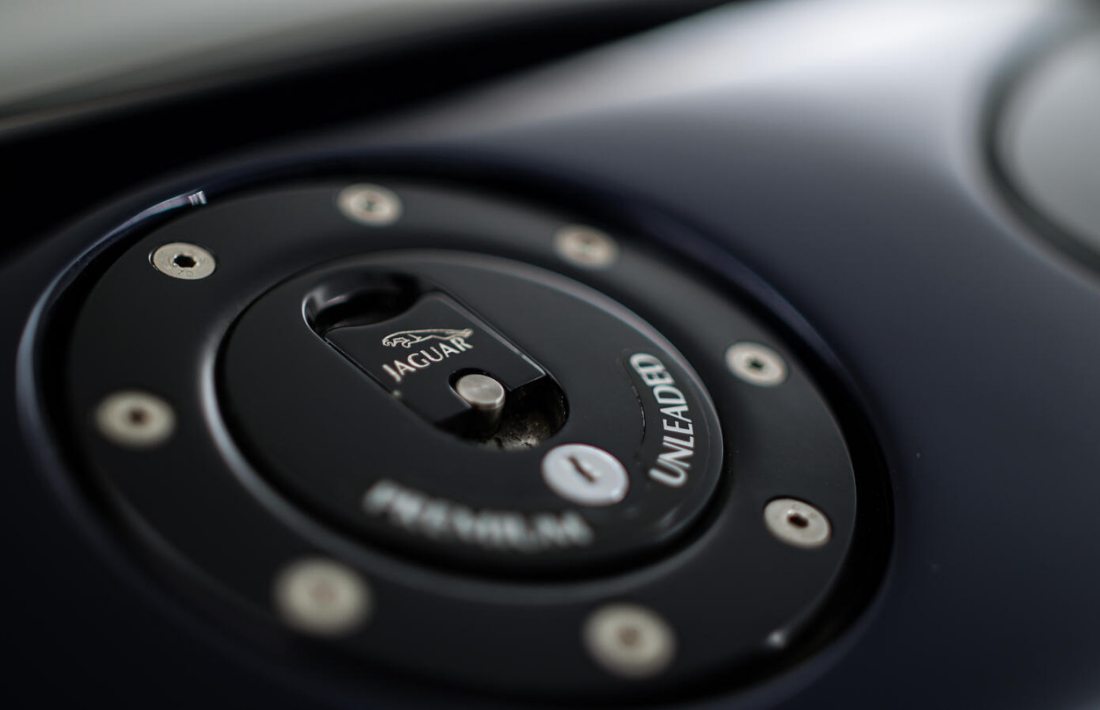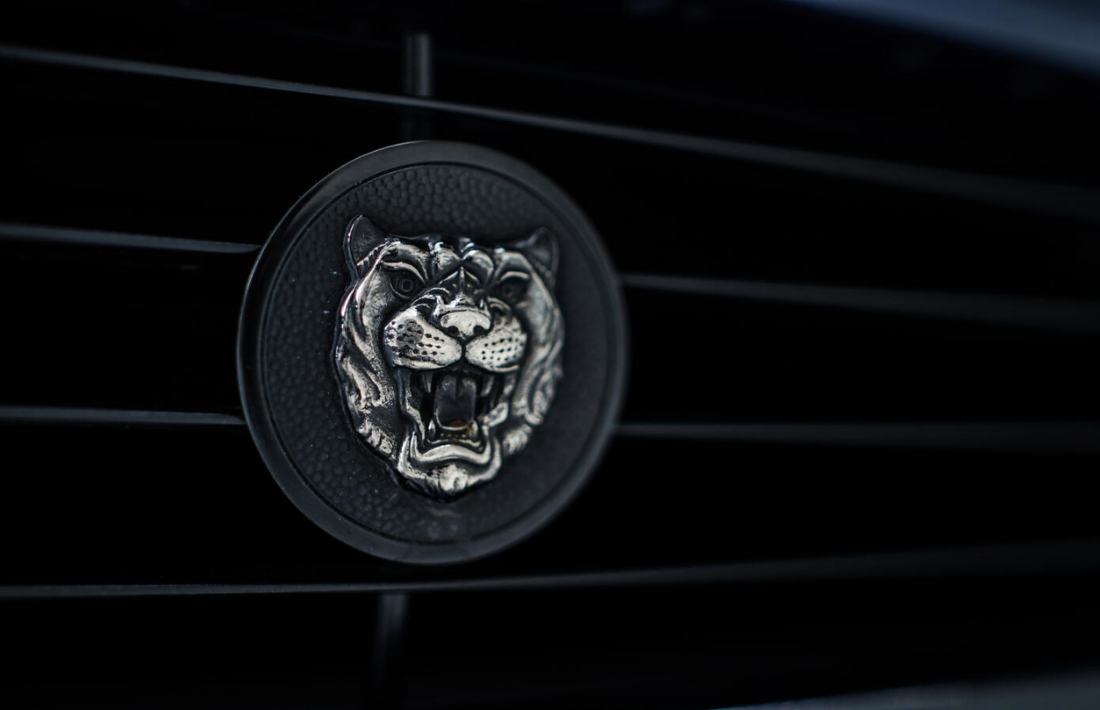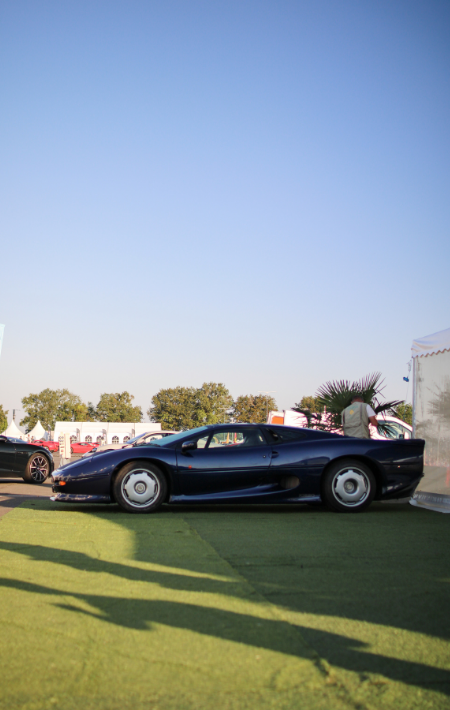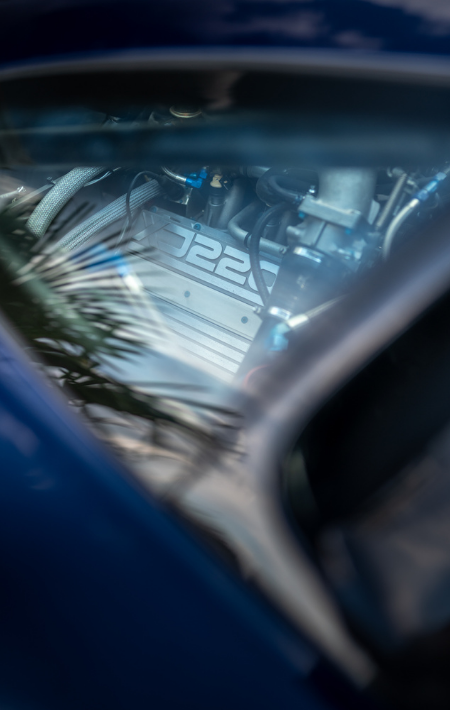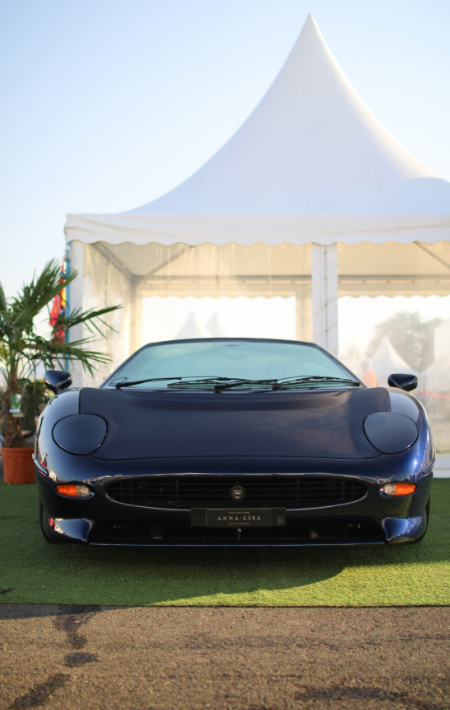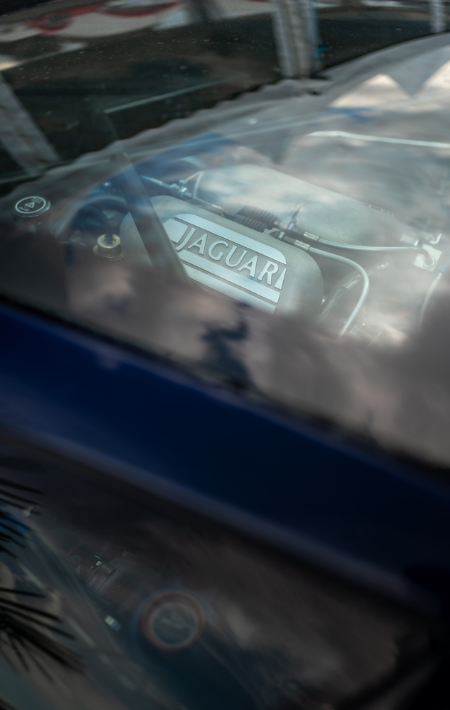Jaguar XJ220 - 1993
— The wild cat —- Our Car Our XJ220 is a RHD Le Mans Blue car built in 1993. It has less than 500 miles on the clock.
- History Our car had only one owner from new before us. It has been fully restarted by Don Law Racing, the World’s number one expert for these cars.
- Driving A car that bet the World record for fastest production car, yet usable in city traffic.
- What We Like The XJ220 has a strong visual signature with its unusual and beautiful lines, both timeless and still very modern for their age.
The XJ220 has had the fate of many a star, first being highly coveted when introduced for the first time, then going under a long period of disinterest and even disdain, before igniting a strong interest in collectors’ minds lately. This quite unusual destiny for what has always been an extraordinary car could apply for our Le Mans Blue example, which was sold new in the UK in February 1993. Indeed, our car has stayed asleep for more than 20 years before we finally rediscovered it and decided to restart it…
The revenge of a supercar that waited 25 years to finally get a proper recognition.
The Eighties and Nineties can easily be described as the hot and wild years of supercars. They witnessed an unprecedented craze mixed with speculation that brought these limited edition cars to the fore. This cult status was a mix of radical design, cutting-edge technology and sulphurous practices such as reselling purchase orders on the grey market, or having stars driving them at breakneck speeds in Gumball rallies.
In short, supercars may not be politically correct, but all car aficionados do love them to the full! The Jaguar XJ220 may be one of the strongest symbols of this era: it was first the subject of wild speculation when launched in 1988 despite a hefty price tag, it was then highly criticised when released – mostly for its downsized V6 engine instead of the V12 that was originally planned – and is now finally celebrated again, fetching staggering world record prices in auctions.
Our car is one of our collection highlights: it had only one owner from new, who barely drove it 440 miles before he put it away for a very long sleep of over 20 years. It was only in 2021 that we finally got this exceptional car restarted.
We took our Jaguar XJ220 back to the UK, for a proper restart. Bringing it back to life was a clear priority for us
© Yann Geoffray Studio Grand Sud
Such a revival after a long silence is a good symbol of the XJ 220’s destiny: after a peak of pre-orders that exceeded all expectations when the prototype was first shown to the public, the XJ220 suffered the wrath of the press when the production car, slightly modified from the Birmingham prototype, was finally presented and delivered. Stepping back and looking at it from a detached perspective, it is rather unfair considering the intrinsic qualities of the car, from its sculptural looks, its highly aerodynamic design, to its record top speed and advanced technology.
Patrick Duvarry was thrilled when our Jaguar XJ220 went back on the road: “We wanted to stage a symbolic battle between the Maranello icon, our Ferrari F40 and the Jaguar XJ220. It was actually a project that envisioned their owner back in the Nineties. After all, both of these cars are two of strongest symbols of this crazy supercars era.”
If we have not been able to set up this battle on track for technical reasons, we have still managed to sublimate them in photos. So it’s a virtual and highly symbolic battle we decided to offer you here.
We actually managed to exhibit both the F40 and the XJ220 in the Supercars area of Sport & Collection, a French annual charity event dedicated to the fight against cancer.
© Ugo Missana – DaVinci Photography
The come-back of supercars on the car’s collecting scene
Supercars have never ceased to make people dream and most of them have seen their value soar in the past years. This is all the more understandable if you consider that what used to be poster cars have now become garage queens of children who have become adults…
Today, renowned car collections are fully dedicated to supercars and the US market, once forbidden to some of them because of homologation issues, is now fully open to those that are over 25+ years old. One good example is the Bugatti EB110, which value and desirability keeps growing
The Italians had certainly become the undisputed masters of supercars alongside Porsche. The United Kingdom, another great nation of the greatest automobiles, did not remain insensitive to supercars and both Jaguar and Aston Martin, before McLaren launched its F1, ventured into this world apart.
The Jaguar XJ220,the supercar the World did not expect.
The Jaguar XJ220 was officially presented on October 18, 1988 at the Birmingham International Motor Show. It took everyone by surprise, as the design was so spectacular and not academic. In fact, the XJ220 was born as an almost clandestine project, even within Jaguar’s management team. Indeed, it was born and led to reality by the ‘Saturday Club’, a small group of engineers who were meeting on weekends to work on unofficial projects. The original idea aimed to fill a gap between production and competition Jaguars by reviving the concept of the legendary C-Type from the Fifties, an ultra-competitive racing car that was versatile enough to be driven on the road. The unofficial goal was also to show the Germans and Italians that they were able to enter the closed circle of supercars.
If the XJ220 and the Ferrari F40 had one thing in common, their conception by a small group of talented engineers during their weekends, they still had a major difference: while the F40 was the brainchild of Enzo Ferrari himself (while keeping its conception away from the official internal procedures), the Jaguar was truly a clandestine project almost to the end, since it was only approved one week before its official presentation! The prototype was actually only finished at dawn on the morning of its presentation! Jaguar did not even have plans to sell it, but it was such a success that they quickly changed their mind.
A hugely successful launch
In England, the XJ220 was officially sold with a £290,000 price tag in 1989, making it a very expensive car for its times. Despite the price and the hefty £50,000 deposit that was required to place an order, it was still a huge success as Jaguar received over 1,000 purchase orders!
The era clearly helped, as we were in the midst of the supercar frenzy with an overheated market when order forms would resell quickly with a premium on the grey market. The figures of the XJ220 prototype were simply out of the ordinary, with a 48-valve, fuel-injected 6.2L V12 engine producing 530 horsepower.
Enfin, le nom de l’auto portait une symbolique importante : XJ pour Experimental Jaguar et 220 pour 220 miles / hour soit la barre mythiEven the name of the car carried an important symbolism: XJ stood for “Experimental Jaguar” while 220 was referring to the 220 miles per hour (350km/h) the car was supposed to reach. This codification was no stranger to Jaguar, since it was used 40 years earlier for the XK120, the first production car to reach 120 mph. The XK 120 had also been presented at the Birmingham Motor Show in 1948 and had also been greeted with a considerable and unexpected number of orders…
Beyond these impressive figures, the Jaguar XJ220 had something to satisfy the most jaded with a cutting-edge design, a single hull chassis and highly elegant aerodynamic lines, that all contrasted with the brutality of an F40. In short, the press was ecstatic and both Jaguar and England were clearly having their revenge over Germany and Italy.
© Yann Geoffray Studio Grand Sud
From dream to reality , the difficulties of transforming a concept car into a production supercar.
If the future looked bright for the Jaguar XJ220 on paper, it quickly became a real logistical nightmare: first of all, Jaguar had just been bought by Ford in 1989 and clearly did not have the internal resources to develop such a car. The management had to turn to Jaguar Sport department associated with Tom Wilkinshaw Racing (TWR) to carry on developing such project. Secondly, the project quickly got confronted with cost overruns making the cost per car far too high.
Very quickly, Jaguar had to lower its ambitions by giving up some of its car’s main assets: the scissors doors, the 4X4 transmission and last but not least, the V12 engine. That was a hard decision since the engine was at the heart of the project, but it was still decided to replace it with a twin-turbo 3.5 litre V6 engine coming from the MG Metro 6R4 which served as the basis for the Metro Group B. Such a change completely hampered the launch of the production car and disappointed journalists and buyers alike, many of whom decided to withdraw their purchase orders.
In fact, the engine downsize impacted positively the weight with a clear reduction. The production car’s total weight was announced at 1.470 kilos, even though the French magazine “Automobiles Classiques” measured it at 1.688 kilos in 1992. It was not a featherweight, despite its chassis created with rigid and robust aluminium honeycomb sections. For the record, the Porsche 959 weighed only 1,400 kilos.
The other gain by having the more compact V6 engine was on the car’s emissions, but also on its length: the production car got shortened by 25 cms from the prototype.
A supercar of outstanding performance
If we can easily understand some of the criticisms since a V12 engine has an aura of its own, we believe they are not justified when focusing on the pure performance angle. Indeed, with a top speed of 342 km/h in the hands of Martin Brundle, who said that the rev limiter prevented him from going any faster, the car was incredibly fast for its time. And it still is by today’s standards!
The engine delivered 542 hp with 642 Nm of torque. On the downside, Jaguar’s 0-60mph time of 3.9 seconds seemed to be a bit optimistic, as no road tester neither private owner has been able to reproduce these figures ever since.
With the help of a few modifications such as the removal of catalytic converters, the XJ220 was able to reach 349 km/h! This validated record remained unmatched until the arrival of the McLaren F1, which smashed it in 1998, 10 years after the presentation of the XJ220 prototype, with a top speed of 386.4 km/h. Similarly, in 1991, a Jaguar XJ220 prototype set a new Nürburgring lap record of 7:36.46. In short, like many car enthusiasts, we believe the criticisms heard at the production XJ220’s release are largely unfounded given the car’s extraordinary qualities.
A foray into competition
Like many supercars at the time, especially since TWR was involved from the start, the temptation to race the XJ220 was great and in 1993 Jaguar entered three Jaguar XJ220-Cs in Le Mans 24 Hours. They came with a notable victory in the GT class in the hands of the trio of John Nielsen, David Brabham and David Coulthard. Unfortunately the euphoria was short-lived, as the stewards decided to disqualify the Jaguars as they realised they had been running without their catalytic converters, something that was actually required by then regulations.
The race car was an offshoot of a more extreme limited version of the XJ220 road car that had been launched by Tom Walkinshaw himself. It had carbon bodywork instead of aluminium; its twin-turbo V6 engine was boosted from 540 to 680bhp and it came with aerodynamic appendages. Produced in six units, it was this XJ220S that led to the homologation of the XJ220C for competition.
A difficult commercial career
The engine downsize and the lack of some of the strongest stylistic features, combined with a hefty final price tag of 470,000 pounds, or about 1 million euros today, led to numerous orders withdrawals and legal actions.
Originally planned for 350 units, only 275 XJ220s have been produced between 1992 and 1994. It is claimed that some units took a very long time to be sold. It must be added that the speculative frenzy around supercars had seriously slowed down at these times. Last, the launch of the extraordinary McLaren F1 in 1992 put the Jaguar in the background.
Finally, the fact the car was hardly homologated in the United States, like the Bugatti EB110, seriously compromised both their commercial careers.
Sold in five different metallic colours, all of which named after famous tracks where Jaguar had shined in the past, the XJ 220 was available in ‘Monza’ red (25 cars), ‘Spa’ silver grey (126 cars), ‘Le Mans’ blue (63 cars), ‘Silverstone’ green (43 cars) and ‘Daytona’ black, the rarest colour with only 18 units sold in that colour. Various cars subsequently adopted other colours, most notably the XJ220S.
Restarting our Jaguar XJ220 , the story of a rebirth
Our RHD “Blue Le Mans” Jaguar XJ220 was sold new in 1993 in the UK and was put asleep for 20+ years. After rediscovering that gem of a car, with such a little mileage (less than 500 miles on the clock), we decided it was time to proceed to a complete mechanical overhaul by Don Law Racing’s team in early 2021.
Notre exemplaire très peu kilométré, moins de 500 miles, se révèle à la hauteur du mythe : envoûtant, incroyablement rapide et attachant.
Some anachronistic details such as the use of Rover 200 rear lights and Citroën CX mirrors, one mounted on the front door panel, the other directly on the door in order to guarantee the best possible view for the driver are some of the features we love most. This mirror’s choice was actually not totally incongruous since it was used by many sports cars: the Lotus Excel and Esprit, many TVRs, the Aston Martin Virage and DB7, the Marcos, the Venturi, but also by the first pre-production McLaren F1 cars!
Like many supercars of this era, it is hard not to be attached to this extra-ordinary car despite its flaws such as its very heavy steering. The feline, low-slung design with its multiple air intakes, its flat floor and rear extractor, the sober interior, which is upholstered in leather in true Jaguar tradition, and the dashboard, which is packed with dials to the point of having them on the driver’s door, are strong characteristics that distinguish the XJ220 from its contemporaries.
Recently rediscovered by the collectors’ world in the wake of the Jaguar XJR-15 frenzy, the XJ220 is now highly sought after. Having admired and driven one, we can only agree that this car deserves it.
Acknowledgements –
The Don Law Racing team for getting the car back on the road, the Sport & Collection organising committee for hosting our car and Yann Geoffray for the photos shot in Studio Grand Sud based in Lyon, France.
